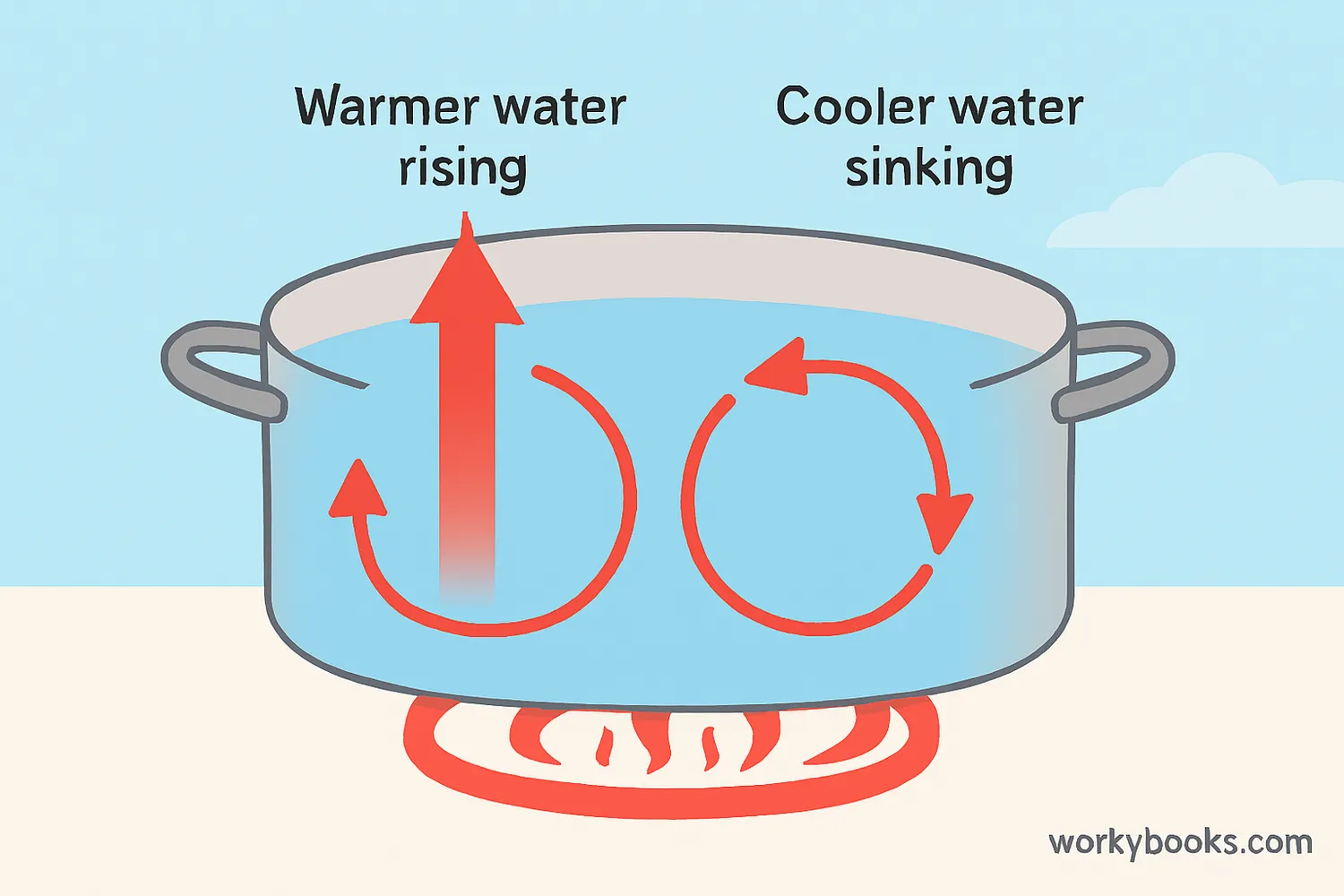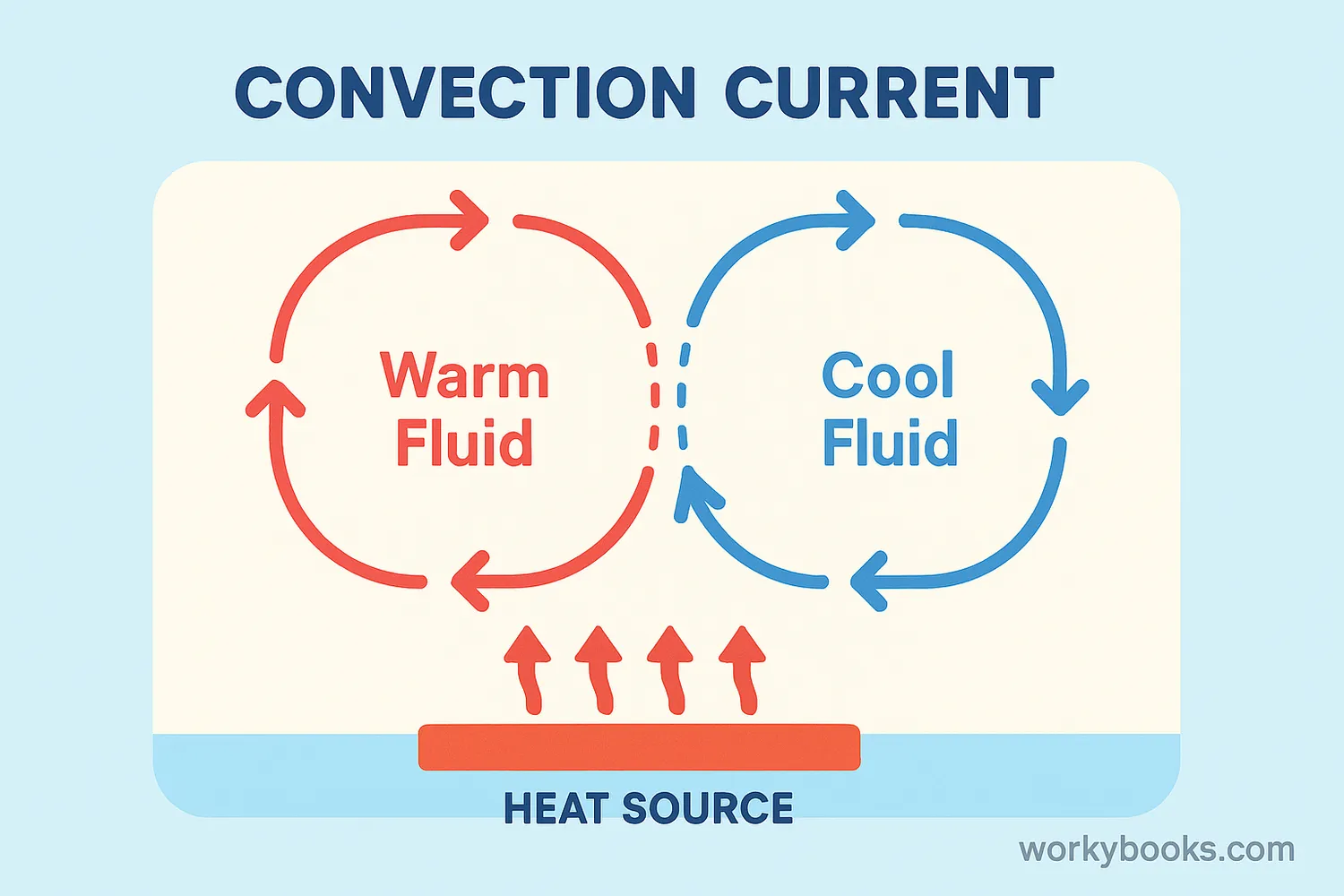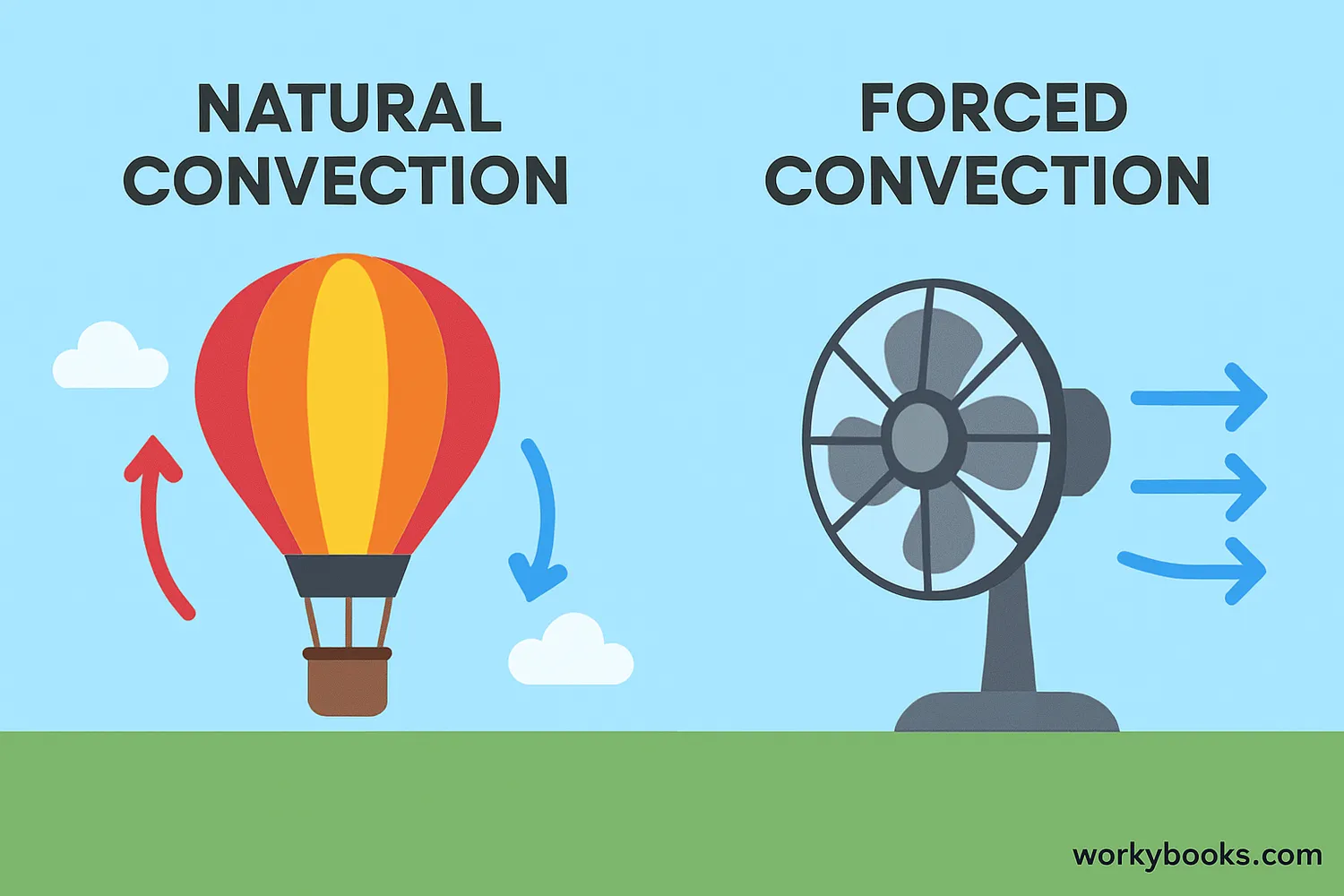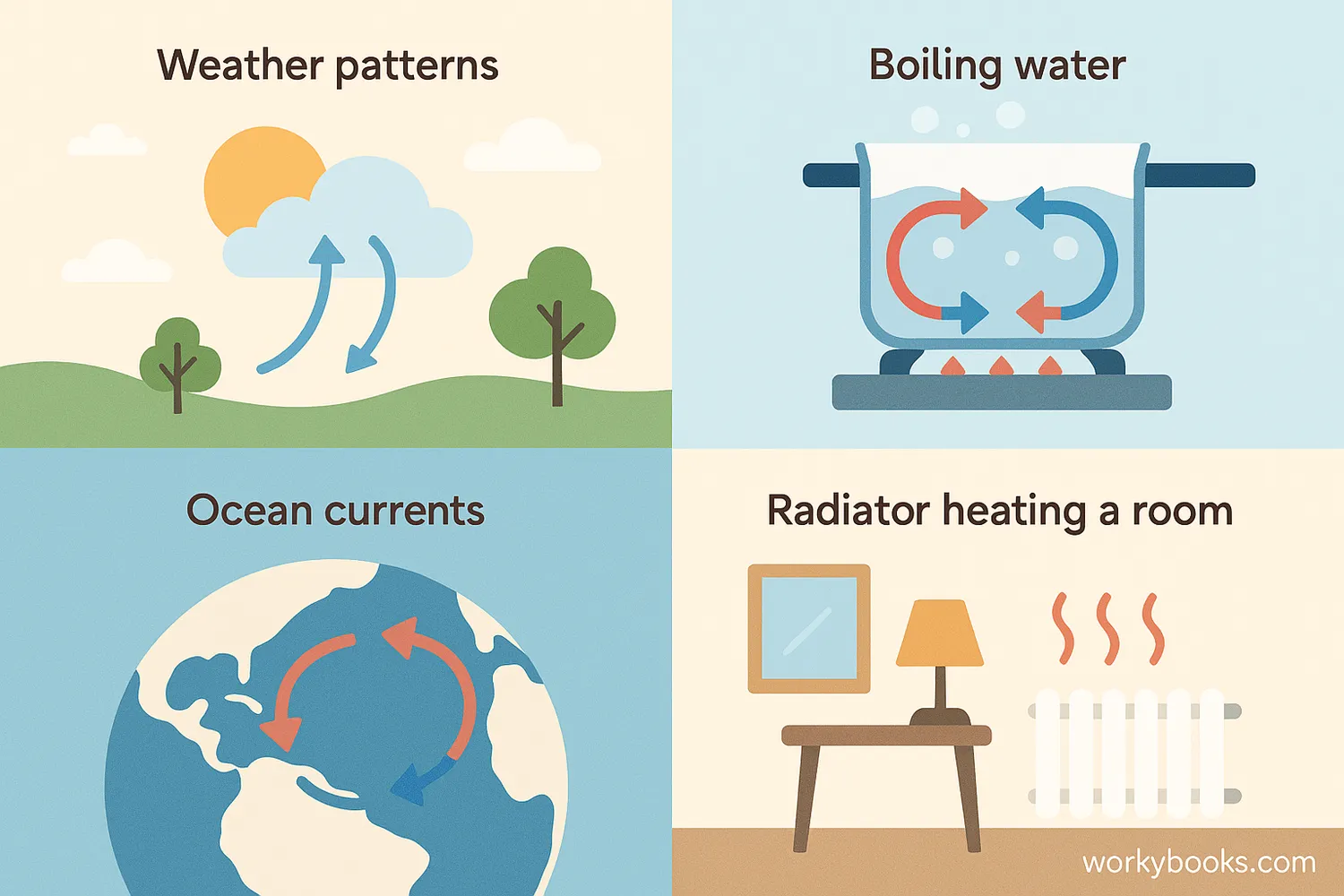Convection - Definition, Examples, Quiz, FAQ, Trivia
Discover how heat moves through liquids and gases
What is Convection?

Convection is one of the three main ways heat moves from one place to another. It happens in liquids and gases when warmer parts move upward while cooler parts sink down.
Think about heating water in a pot. The water at the bottom heats up first, becomes lighter, and rises. The cooler water at the top sinks down to get heated. This creates a circular motion called a convection current. This is how heat transfers through fluids!
Science Fact!
Convection currents are responsible for ocean currents, weather patterns, and even the movement of molten rock inside the Earth!
How Convection Works

Convection works through a simple process of heating, rising, cooling, and sinking:
Heating
Fluid near the heat source warms up
Expanding
Warmed fluid expands and becomes less dense
Rising
Less dense fluid rises upward
Cooling
Fluid cools at the top and becomes denser
Sinking
Cooler, denser fluid sinks back down
This cycle creates a continuous flow called a convection current. The movement of the fluid transfers heat energy from warmer areas to cooler areas.
Did You Know?
Convection currents in Earth's mantle cause the movement of tectonic plates, creating mountains and causing earthquakes!
Types of Convection

There are two main types of convection that transfer heat:
Natural Convection
Occurs naturally due to temperature differences. Warm fluid rises and cool fluid sinks without any external force.
Examples: Warm air rising from a heater, hot air balloon rising, boiling water
Forced Convection
Uses external devices like fans or pumps to move fluid and transfer heat faster.
Examples: Blowing on hot soup to cool it, car radiator with fan, air conditioner
Natural convection happens on its own, while forced convection uses technology to make heat transfer more efficient. Both types follow the same basic principles of heat transfer through fluid movement!
Examples of Convection

Convection is all around us! Here are some common examples you can observe:
Weather Systems
Warm air rises, cools, and forms clouds. This creates wind and weather patterns.
Boiling Water
Heated water at the bottom rises while cooler water sinks, creating circulation.
Ocean Currents
Warm water moves from the equator toward the poles while cold water moves back.
Heating Systems
Radiators heat air which then rises, creating convection currents that warm rooms.
Cooking
Convection ovens use fans to circulate hot air, cooking food faster and more evenly.
These examples show how convection is an essential process in both nature and technology. Next time you see steam rising from your hot chocolate or feel a breeze on a warm day, you're observing convection in action!
Convection Quiz
Test your convection knowledge with this quiz! Answer all 5 questions to see how much you've learned.
Frequently Asked Questions
Here are answers to some common questions about convection:
Convection Trivia
Discover some amazing facts about convection!
Atmosphere Movers
Convection currents in the atmosphere can be enormous! Some stretch over thousands of kilometers and last for weeks, creating our weather patterns.
Earth's Engine
The convection currents in Earth's mantle move at about the same speed your fingernails grow - just a few centimeters per year!
Solar Convection
The Sun has massive convection zones where hot plasma rises, cools at the surface, and sinks back down. These create the Sun's grainy appearance.
Birds Use Convection
Birds like eagles use thermal convection currents to soar high in the sky without flapping their wings, saving enormous amounts of energy.


